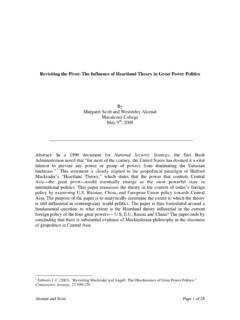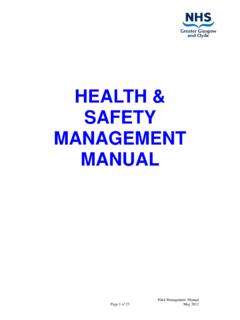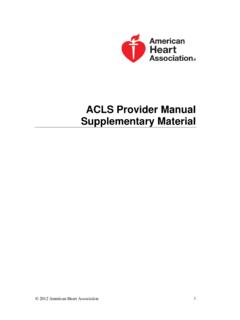Transcription of Eric V. Ernest, M.D., EMT-P Department of …
1 Airway Management and Ventilation Eric V. Ernest, , EMT-P Department of emergency medicine university of nebraska Medical Center Airway/Ventilation Overview Respiratory Assessment Supplemental Oxygen Delivery Ventilation Devices Airway Management Basic Adjuncts Advanced Adjuncts Airway management is the cornerstone of paramedicine. Successful patient outcome depends on our abilities to maintain an airway and ventilate a patient. We have as little as 6-10 minutes before irreversible brain injury and death result. Pearl #1 Pearl #2 K-I-S-S Principle of Airway Management Keep it In most circumstances begin with the basics. Just because we arm you with an endotracheal tube and laryngoscope (scalpels in some cases) does not mean that you can forget the basics or become sloppy in their performance.
2 Respiratory Problems Airway Obstruction Tongue* FBs Trauma Laryngeal spasm/edema Aspiration Inadequate Ventilation - rate and/or volume TBI Overdose Acidosis Muscular dystrophy Respiratory System Assessment - ABCs A = Airway B = Breathing C = Check A and B again Look Listen Feel Pulse Oximetry 5th vital sign Measurement of hemoglobin oxygen saturation 95 - 100 % normal (vary slightly by source) False readings carbon monoxide poisoning high intensity lighting red, black or other dark nail polish absent pulse or diminished perfusion hypovolemia/anemia Peak Flow Meters Provides a numeric indicator of ventilatory flow Patient forcefully exhales after a maximal inhalation When repeated provides a measure of improved, worsening, or unchanged response to treatment Supplemental Oxygen Delivery Nasal Cannula Simple Face Mask Partial Re-breather Mask Non Re-breather Mask Venturi Mask Nasal Cannula Delivers low concentration oxygen - 24-44% Run at 1-6 liters/minute Contraindicated poor respiratory effort hypoxia apnea Well tolerated.
3 Ideal for patients needing minimal oxygen supplementation or those on long-term oxygen therapy Simple Face Mask Delivers 40-60% oxygen concentration Flow rates of 6-10 liters/minute Side vents in mask allow for atmospheric gas to mix with oxygen Flow rates of less than 6 L/min are contraindicated Flow rates above 10 L/min do not enhance oxygen delivery Re-breather Masks Partial Delivers 35-60% oxygen concentration Has reservoir bag but only one side port controlled - allows for mixing of exhaled & environmental gases Nonrebreather Delivers 80% upwards to 95% oxygen concentration Has reservoir bag and one-way side ports Flow must be adequate to keep the reservoir bag inflated based on patient RR and depth. Contraindicated for any patient without adequate tidal volume and Venturi Mask Mask able to deliver more precise fraction of inspired oxygen (FiO2)
4 Color coded adapters attached to mask at a corresponding flow rate will deliver a fairly precise concentration of oxygen Delivers from 24-50% oxygen Recommended for patients breathing on hypoxic drive - COPD Ventilation Devices Mouth-to-Mouth Mouth-to-Nose Mouth-to-Stoma Mouth-to Mask Bag-valve Devices Demand Valve Device Automatic Transport Ventilator Mouth-To-Mouth Inspired air results in the exchange of 4-5% of oxygen, 16-17% is exhaled Is not a preferred method due to communicable diseases Be aware of spinal injury and open the airway accordingly Provide full steady breaths Rescue breathing, without chest compressions Adult 1 breath every 5-6 seconds (10-12 bpm) Peds 1 breath every 3-5 seconds (12-20 bpm) CPR with advanced airway 1 breath every 6-8 seconds (8-10 bpm) Mouth-To-Nose Similar in technique to mouth-to-mouth May be used if unable to perform mouth-to-mouth due to trauma, etc.
5 Note: mouth-to-mouth-and-nose technique used in infants Mouth-To-Stoma Stoma is a temporary or permanent surgical opening in the neck of a patient who has had a laryngectomy or tracheostomy The larynx is no longer connected to the trachea An ETT can be inserted no more than 3-5 inches into trachea Pediatric mask and bag-valve device may also be used Mouth-To-Mask Devices Eliminates direct patient contact Various brands - mask musts be clear Supplemental oxygen ports available, connect as available Preferred method of initial ventilation Use of an OP or NP is indicated Bag-Valve Devices Used with a mask, ETT, & other airway devices Self-inflating bag with reservoir or collecting tubing Available in adult, pediatric and infant sizes Major obstacle is creating an effective mask seal and squeezing the bag - may be better suited to 2-3 person use Remember to attach supplemental oxygen Use cricoid pressure to prevent gastric insufflation Demand Valves Oxygen under high pressure - 50% psi Device may be manually triggered or by negative pressure from patients own respiratory effort Gastric distention a major problem Not recommended for use in patients under 16 years old Contrary to other sources, I strongly urge you to not use with an ETT!
6 !! Automatic Transport Ventilators Gaining popularity Simple to use Set Tidal Volume Set RR Most not used on kids under 5-years, consult manufacturer Contraindicated in airway obstruction or those with increased airway resistance COPD Pulmonary Edema Pneumothorax Suction Fixed & portable devices - check your batteries Soft catheters - soft-tip, narrow & flexible Rigid catheters - tonsil-tip, yankauer Never use yankauer blindly Suction on the way out only - you are depriving your patient of oxygen Pre-oxygenate your patient first for 2-minutes Suction should never exceed 10-seconds in adults & 5-seconds in pediatrics Monitor cardiac rhythm, pulse ox, signs of soft tissue injury, or aspiration Manual Airway Maneuvers Head-Tilt/Chin-Lift Jaw-Thrust Modified Jaw-Thrust (no head tilt) Always remember that when you do something to open or control an airway, there are implications for the cervical spine - Remember the C-Spine!
7 Basic Airway Adjuncts Nasopharyngeal Airway Oropharyngeal Airway Nasopharyngeal Airway Indications Semi-conscious, decreased control of upper airway with an intact gag reflex Prevention of tissue trauma during frequent nasotracheal suctioning Contraindications Nasal obstruction Nasal fracture or suspected maxillofacial or basilar skull fracture Patients on anticoagulant therapy NOTE - tend not to see used in pediatric patients NPA - Procedure BSI Size - measure from tip of nose to the tragus of the ear or angle of the jaw, sizes range from 20-36 FR, 17-20 cm long Lubricate the airway and nostril with water soluble lubricant Bevel to face septum, gently insert If resistance encountered, pull back and re-approach Trumpet of airway should come to rest at nostril opening NPA Advantages Well tolerated in patients with gag reflex Quick, easy procedure Complications May precipitate laryngospasm & vomiting - aspiration Epistaxis Does not isolate & protect the lower airway Oropharyngeal Airway Indications Designed to prevent the tongue from obstructing the glottis Patient must be unconscious or have an absent gag reflex NOTE - commonly used as a bite stick following ETT Very important Contraindications Presence of gag reflex Oropharyngeal injuries OPA Procedure BSI Size - measure from corner of mouth to angle of jaw Suction Insert Rotational - 180-degrees Tongue Blade (preferred method for pediatrics)
8 Be sure that the tongue is not forced into the airway causing obstruction Good placement - patient easily ventilated with good breath sounds and rise/fall of chest OPA Advantages Maintains an open airway from the #1 cause of obstruction Provides for easy access to suction Serves as a bite block Relatively easy procedure Complications Incorrect size of airway may cause obstruction May stimulate gag reflex - vomiting - aspiration Does not protect lower airway Possible injuries to teeth or soft tissue Advanced Airway Management Endotracheal Intubation Oral Nasotracheal Transillumination Digital Trauma In-line Intubation RSI Esophageal Tracheal Combitube Laryngeal Mask Airway (LMA) Pharyngo-Tracheal Lumen Airway EOA/EGTA Direct Laryngoscopy Surgical Airways Needle Cricothyroidotomy Surgical (open) Cricothyroidotomy Endotracheal Intubation Provides for definitive airway protection Requires more training than other airway procedures and must be practice often to maintain proficiency High potential for complication Endotracheal Intubation Equipment Laryngoscope Endotracheal Tube 10 mL Syringe Stylet Bag-valve-mask device Suction Bite block Magill forceps Tape/Tube holder ETCO2 Detector (capnography) Esophageal Detector Device (EDD) Laryngoscope Instrument used to visualize the vocal cords/glottic opening Consists of handle and blade Straight Blade (Miller, Wisconsin) Curved Blade (MacIntosh)
9 Blades may be reusable or disposable Light needs to be bright & tight Have extra batteries and bulbs Straight Blade Designed to fit under/past the epiglottis and physically manipulate the epiglottis out of the way thereby allowing visualization of the vocal cords and glottic opening Curved Blade Designed for the tip of the blade to fit into the vallecula. Lifting or applying pressure here shortens ligamentous attachments to the epiglottis thereby lifting it out of the way so that visualization of the vocal cords and glottic opening may be appreciated. Endotracheal Tubes Stylet and Syringe Tube-Holding Device Magill Forceps Esophageal Detection Device Capnography - ETCO2 Detection Indications for ETI Patient unable to protect his/her own airway - absent gag reflex Need for prolonged artificial ventilation Prevents gastric insufflation Allows for PEEP and higher pressure ventilation as needed Provides a route for emergency medication administration when IV not possible Intubation is done not only to ventilate but to isolate the lower airway to prevent ETI - Contraindications Conscious, alert patient with intact gag reflex (without RSI)
10 Patients with quickly and easily reversible conditions - diabetic, drug OD C-Spine injury - must modify technique Epiglottitis - unless imminent airway failure You are not trained or authorized to perform procedure ETI Advantages Isolates trachea Impedes gastric distention Eliminates need for mask seal Direct route for pulmonary suction Alternate medication route Disadvantages Requires considerable training/experience Specialized equipment required Bypasses upper airway functions (warming, filtering, humidifying) ETI Complications Equipment Malfunction Airway Trauma Hypoxia - limit attempts to 30-seconds Unrecognized esophageal intubation Endobronchial intubation - mainstem Barotrauma Vocal cord damage - voice changes Increased ICP in head injuries Vagal stimulation (bradycardia, hypotension) Esophageal Placement BAD!
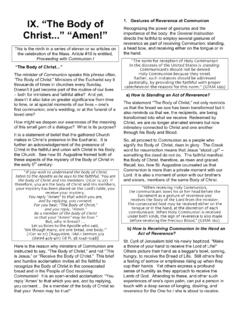

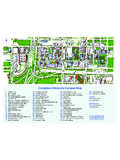
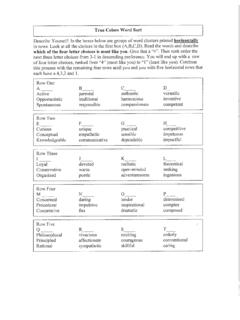


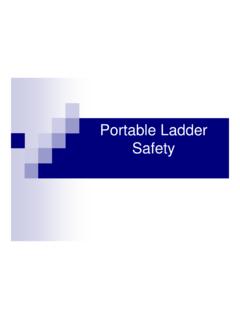
![Hearing protection [Read-Only] - Creighton University](/cache/preview/9/6/e/e/8/f/d/c/thumb-96ee8fdc2111eb2b05b9b613f7af1575.jpg)
